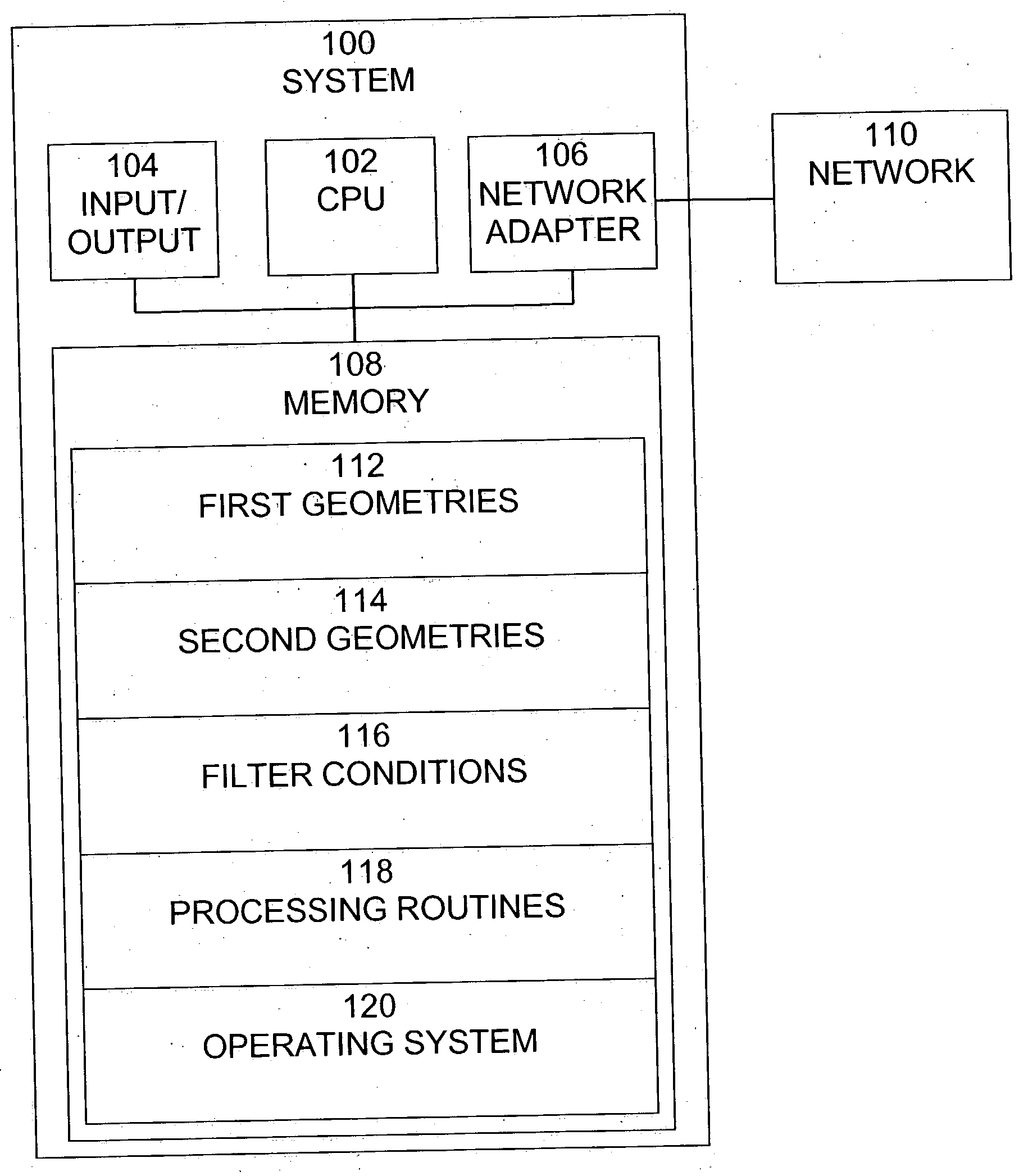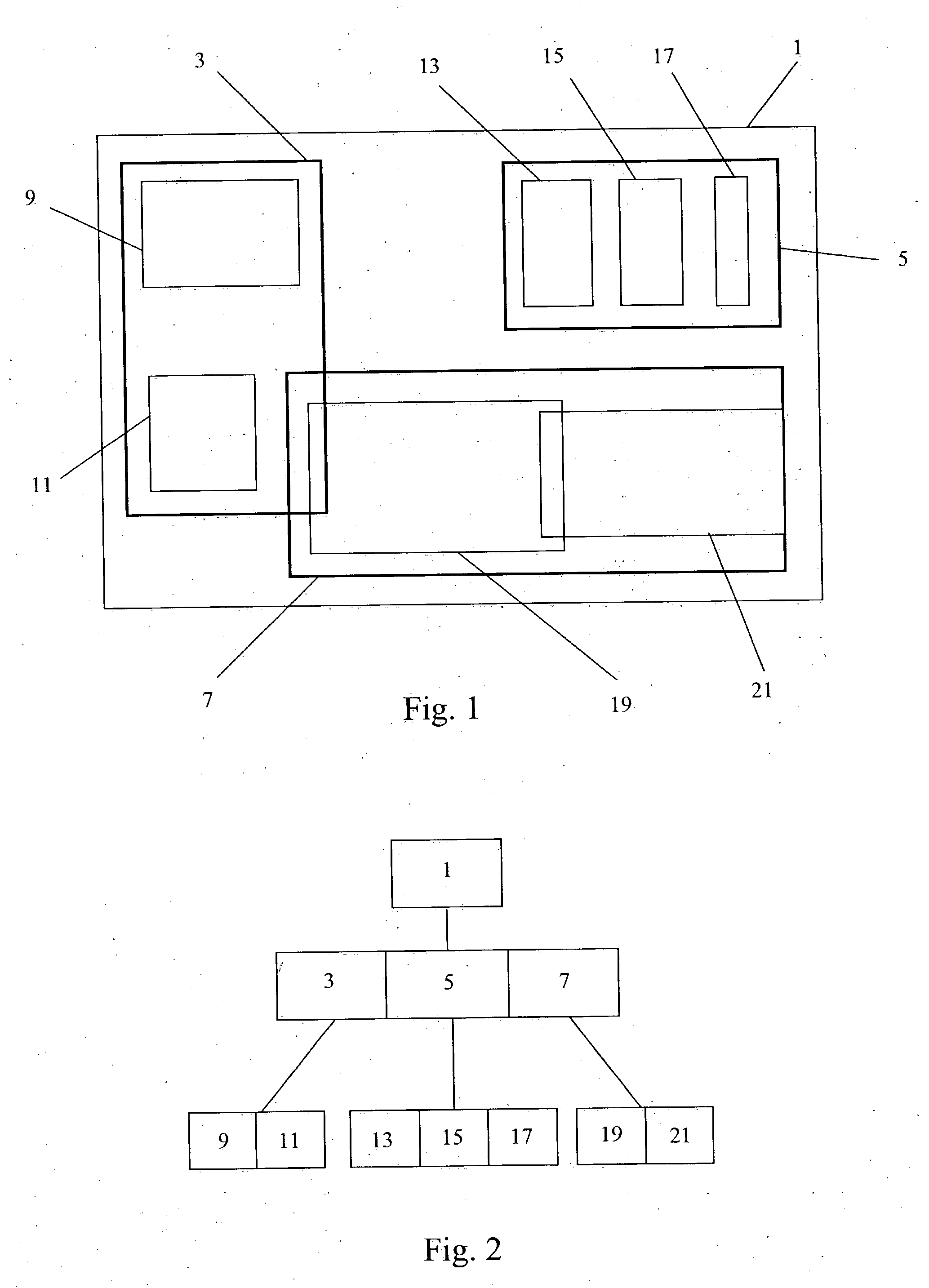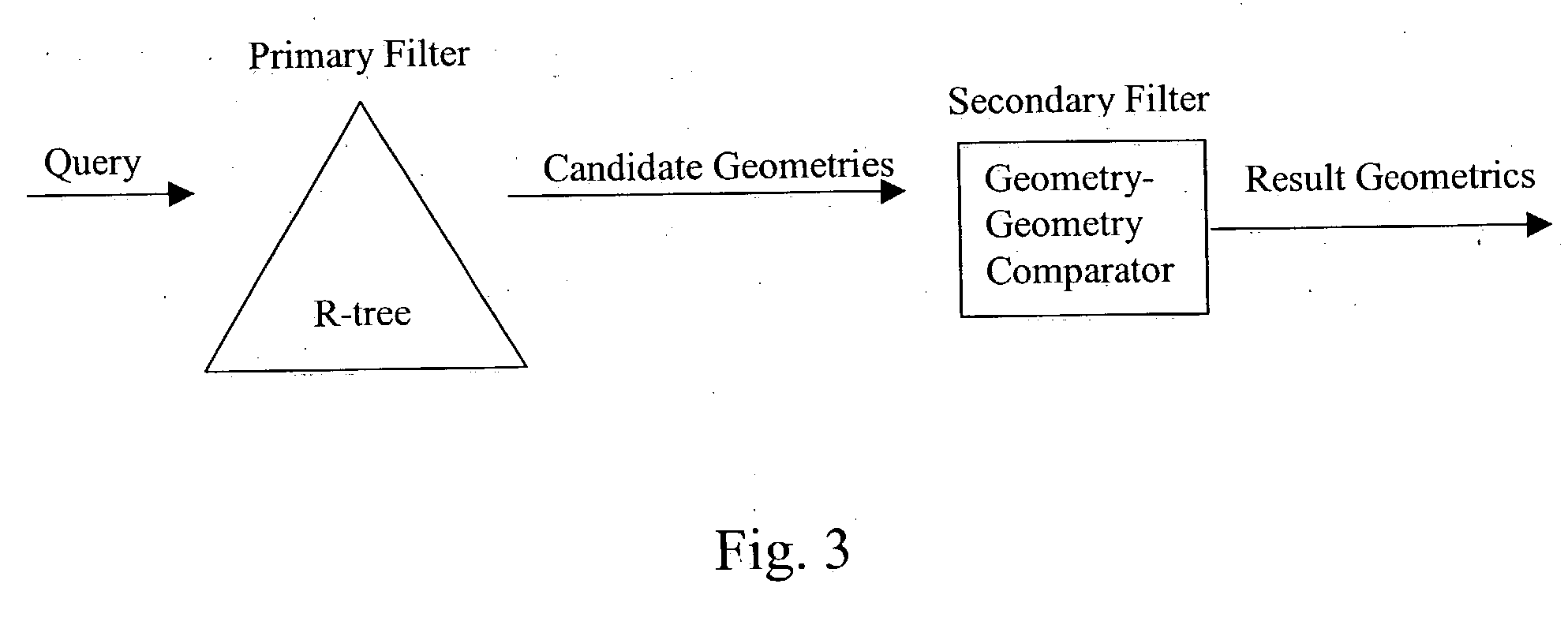Within-distance query pruning in an R-tree index
a technology of indexes and distances, applied in the direction of distance measurement, instruments, mechanical measuring arrangements, etc., can solve the problems of not really a choice as to which objects (or bounding boxes) are being aggregated, the update algorithm does not make use of the spatial extent of bounding boxes
- Summary
- Abstract
- Description
- Claims
- Application Information
AI Technical Summary
Benefits of technology
Problems solved by technology
Method used
Image
Examples
Embodiment Construction
A spatial or geographic database can include data concerning locations of features in space or on a surface. Spatial data can include geometric data that includes simple primitive elements such as lines, curves, polygons (with and without holes), and compound elements that are made up of a combination of the primitive elements. For example, a geographical database can include data concerning the location of various objects in a region. Along these lines, a geographic database can include mathematical representations of counties, cities, homes, apartment buildings, parks, businesses, subway stations, and other features. The location information could be in the form of latitude and longitude data or other data that defines position.
Once a database including this information is created it is typically desired to access and utilize the information. One way that the information in the databases is utilized involves determining the relative positions of particular location. Along these l...
PUM
 Login to View More
Login to View More Abstract
Description
Claims
Application Information
 Login to View More
Login to View More - R&D
- Intellectual Property
- Life Sciences
- Materials
- Tech Scout
- Unparalleled Data Quality
- Higher Quality Content
- 60% Fewer Hallucinations
Browse by: Latest US Patents, China's latest patents, Technical Efficacy Thesaurus, Application Domain, Technology Topic, Popular Technical Reports.
© 2025 PatSnap. All rights reserved.Legal|Privacy policy|Modern Slavery Act Transparency Statement|Sitemap|About US| Contact US: help@patsnap.com



